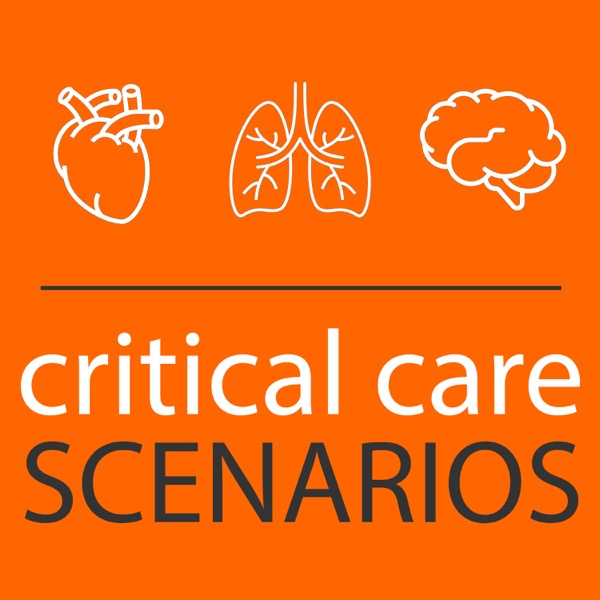Episode 45: Amniotic fluid embolism with Stephanie Martin
Critical Care Scenarios - Un pódcast de Critical Care Scenarios - Miercoles

Categorías:
We discuss the clinical presentation and management of AFE with guests Dr. Stephanie Martin (Twitter: @OBCriticalCare, Instagram: @criticalcareob), medical director for Clinical Concepts in Obstetrics and a Maternal Fetal Medicine specialist in Scottsdale, Arizona with expertise in critical care obstetrics. She is also co-host of the Critical Care Obstetrics podcast. We’re also joined for a patient perspective by Miranda Klassen (@afefoundation), Executive Director of the AFE Foundation, and her husband Bryce Klassen, CCRN, ICU Supervisor at Scripps Memorial Hospital Encinitas. Takeaway lessons * AFE is poorly understood but is probably caused by exposure of amniotic fluid (skin cells, hair, vernix, etc) to maternal blood, causing a severe inflammatory reaction. Although it may contribute, it is probably not mainly due to obstructive shock, as seen in pulmonary embolism.* AFE is rare. Some clinicians will go an entire career without seeing it. However, it certainly happens and has tremendous consequences when it does.* As a rule, ACLS care is the same for pregnant women. The main exception is that if ROSC is not obtained immediately, you must perform a resuscitative Caesarean section within the first 4 minutes, aiming to have the baby delivered within 5. Without this, the chances of recovering the mother are slim: the gravid uterus interferes with compressions, compresses the IVC, and causes other problems. Achieving this in non-obstetric areas requires a carefully thought-out process. Time must not be wasted transporting the patient elsewhere. The only equipment absolutely required is a scalpel, although this too can be hard to find if you haven’t optimized your process. In short, if you have a pregnant woman in your ICU, figure out now what you’re going to do now if she codes.* Due to the logistical challenges, most of these resuscitative C-sections are actually done in 6-15 minutes. This is not the goal.* During CPR, the gravid uterus should be manually displaced to one side, preferably the left. (It is no longer recommended to tilt the patient laterally, since this interferes with compressions.)* AFE is rare, but with excellent care it is survivable.* Bleeding post C-section is usually not significant. The abdomen can be left open, and can even be used for aortic access to check for the pulse, or occlude the aorta (either manually or by cross-clamp).* A normal fibrinogen level in a pregnant or immediately post-partum female is elevated (often in the ~600s), so a “normal” level should be considered low. Use this to follow DIC. Bleeding and clotting may both occur.* Although pregnant women have a subtle physiologic hemodilution, their normal hemoglobin should not drop below 11, so for our purposes, anemia still denotes anemia.* Resuscitating the immediately post-partum woman should not mean great confusion about safe medications. Use whatever is necessary to save her life. Any impacts on breastmilk can be managed by pumping and either saving or dumping it as appropriate.* A compensated respiratory alkalosis via hyperventilation should be expected during pregnancy (the mother must have a lower PCO2 than the fetus to create a gradient for fetal ventilation). This persists post-partum, so it’s probably appropriate to aim to maintain this by increasing minute ventilation, even although it’s likely not as critical since there’s no longer a fetus to support.* The most important post-partum care after an emergency like this remains supportive critical care. Eventually the mother can be transferred to a post-partum obstetric unit,
